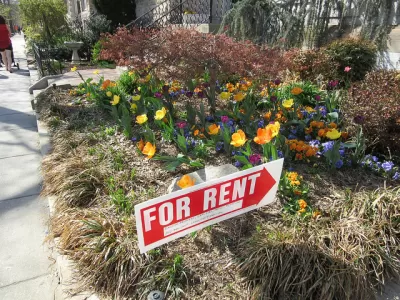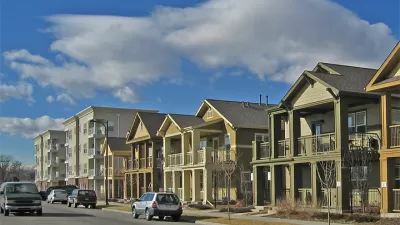If Congress gave the Housing Choice Voucher program enough money to serve every income-eligible applicant, what other reforms would be needed so every voucher recipient could find a decent home in a suitable area?

The Housing Choice Voucher program—often called Section 8—is the federal government’s most effective tool for combating homelessness, keeping more than 2 million families housed each year. While it is effective, it also needs repair. After all, Section 8 is so underfunded that 8.2 million households that qualify for a voucher can’t get one.
But that’s not the only problem.
Nearly one in three households that do get a voucher can’t find a suitable home with a landlord willing to accept it. These households often lose their voucher and their place on a yearslong waiting list, which can be mentally and emotionally damaging, says Vincent Reina, an associate professor in the Department of City and Regional Planning at the University of Pennsylvania.
“People are on the waitlist for decades,” he says. “They’re making decisions that are affected by something that may never happen, and their outcomes may actually be worse because they’re waiting.”
It’s for that very reason that a new housing system is needed, says Andreanecia Morris, executive director of HousingNOLA, a New Orleans-based housing advocacy group. “Universal vouchers are absolutely a part of that new system, but it needs to be a system that would guarantee housing for all voucher holders.”
To make the Housing Choice Voucher program truly work—that is, give the maximum number of eligible households a voucher and the ability to find a clean and habitable home they can afford in an area that has access to basic amenities like groceries and transportation—housing advocates like Andrew Aurand, vice president for research at the National Low-Income Housing Coalition (NLIHC), say the program needs a combination of changes on both the demand and supply sides.
“We need subsidy programs to increase the supply of units available to voucher holders,” Aurand says, “and we need to preserve the affordability and the quality of these units.”
To get to the appropriate combination of systemic changes to fix the Section 8 program “we need to be thinking about different ways to implement things we’ve already tried, and also thinking about new things to make it work from the landlord side,” says Katherine O’Regan, faculty director of New York University’s Furman Center for Real Estate and Urban Policy.
“It’s almost like there’s a three-legged stool. You’ve got private market landlords, the voucher households themselves, and the local housing authorities,” she says. “And there are things that we are going to need for each of the legs of that stool to make it work.”
What are some of the most pressing changes that would be needed to allow the Section 8 program to provide stable housing to as many low-income families as possible?
Increase Housing Supply
New home construction tanked after the housing crash of the late 2000s, leaving the nation short 5.5 million homes. To make up for what hasn’t been built over the past decade, it’s estimated developers need to build ...
FULL STORY: How to Make Universal Vouchers Actually Work

Alabama: Trump Terminates Settlements for Black Communities Harmed By Raw Sewage
Trump deemed the landmark civil rights agreement “illegal DEI and environmental justice policy.”

Study: Maui’s Plan to Convert Vacation Rentals to Long-Term Housing Could Cause Nearly $1 Billion Economic Loss
The plan would reduce visitor accommodation by 25% resulting in 1,900 jobs lost.

Why Should We Subsidize Public Transportation?
Many public transit agencies face financial stress due to rising costs, declining fare revenue, and declining subsidies. Transit advocates must provide a strong business case for increasing public transit funding.

Paris Bike Boom Leads to Steep Drop in Air Pollution
The French city’s air quality has improved dramatically in the past 20 years, coinciding with a growth in cycling.

Why Housing Costs More to Build in California Than in Texas
Hard costs like labor and materials combined with ‘soft’ costs such as permitting make building in the San Francisco Bay Area almost three times as costly as in Texas cities.

San Diego County Sees a Rise in Urban Coyotes
San Diego County experiences a rise in urban coyotes, as sightings become prevalent throughout its urban neighbourhoods and surrounding areas.
Urban Design for Planners 1: Software Tools
This six-course series explores essential urban design concepts using open source software and equips planners with the tools they need to participate fully in the urban design process.
Planning for Universal Design
Learn the tools for implementing Universal Design in planning regulations.
Smith Gee Studio
Alamo Area Metropolitan Planning Organization
City of Santa Clarita
Institute for Housing and Urban Development Studies (IHS)
City of Grandview
Harvard GSD Executive Education
Toledo-Lucas County Plan Commissions
Salt Lake City
NYU Wagner Graduate School of Public Service





























